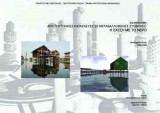Supervisor:
2010
Searching the kinds of relations that are grown because of the habitation of human close to the water a series of examples that have this orientation are studied. The intention is to cover through them the greatest possible geographical area of the whole human history.
After examining the water as natures element and its behavior and role in the weather phenomenon, the causes that push the human to seek for the approach and habitation of spaces where water exists in great quantities are searched.
Different practices and methods with which human approaches water each one with its consequences have been studied. There have been discriminated the cases that people seek for moving on the water surface, permitting the water to move while people stay immovable and trying to approach banks and seaside knowing eventual unfavorable consequences for him that may interrupt their regular habitation.
Different parameters that determine the relation that is developed between the user and the water have been studied depending on the construction and the kind of water environment. The contrast has been detected between deferent conditions of movement, different sizes of construction and different kinds of interactions. With these information the conditions of neighboring with water can be characterized as positive, when a harmonic coexistence of human and water is developed, neutral when people use it as dispensable space to be exploited and finally negative when water tends to thread human activities.
In this way we could determine that people’s choices related to local parameters of the environment lead to deferent architectural solutions.
